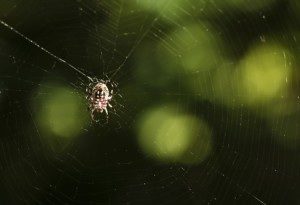‘Pirate Spiders’ Murder Other Spiders In Order To Survive
When it comes to building effective webs, orb-weaver spiders have all other spiders beat. There are, of course, many web-weaving spiders in the world, but orb-weaver webs are among the most well known for their prominence and appearance. Orb-weaving spiders have been called the most successful animals on earth and there are over three thousand different species of orb-weavers in existence. Orb-weaver spiders can be found at just about any region on the planet. Pirate spiders belong to the same group that orb-weaver spiders belong to, but these spiders don’t weave webs; instead pirate spiders lure other spiders to their deaths.
Pirate spiders cannot weave circular webs like orb-weavers can, but pirate spiders can still produce silk. A pirate spiders’ silk is dedicated to nothing more than building egg sacs and wrapping prey. Instead of taking the time to hunt other spiders, pirate spiders will invade the territory of a web-building spider in order to kill the web’s architect. The pirate spider will deliberately make contact with a spider web so that the web’s builder will come out into the open. Once this occurs, the web-building spider is normally a goner. The pirate spider will begin to feast on the foolish prey by enclosing it within its two large front legs. The pirate spider’s two front legs are covered in spikes, which helps to prevent the captive spider’s escape. Finally, the pirate spider uses its large fangs to inject powerful venom into its prey. This move instantly subdues the spider prey.
Many researchers believe that the pirate spider mimics the vibrations that are caused when other arthropods become stuck in spider webs, and therefore the host spider emerges expecting to find a meal. However, some researchers disagree, and instead claim that no mimicking occurs. This idea says that a host spider will recognize the vibrations as an indication that another invasive spider is present. This latter theory makes sense since spiders sometimes attempt to steal captured prey from the webs of other spiders. Web-building spiders have likely evolved the ability to discern invading spiders from captured spiders or insects. In any case, the pirate spider nearly always wins the inevitable battle that ensues after they invade another spider’s territory. Researchers believe that the pirate spider’s hunting strategy is among the most effective of all hunting strategies in the arthropod world.
Have you ever seen a spider stuck in another spiders web? If you have, then how long did you have to wait before the host spider ate its captured prey?
